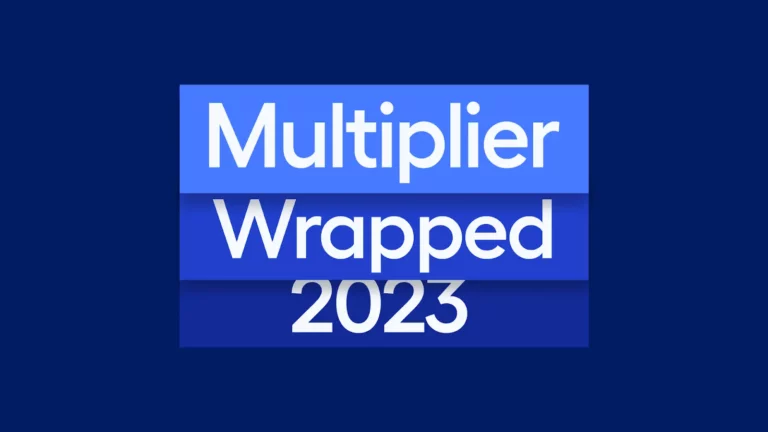You may need no introduction to explain the obvious – the behavior of the workforce and the HR industry has been revolutionized post-covid. There are countless posts explaining the trends that are about to follow in the coming years.
All HR trends express one commonality – borderless HR. Hiring, onboarding, employing, and working have become remote. If so much can be accomplished in the virtual world, that means borders aren’t a barrier anymore.
Although understanding trends helps you stay competitive, wouldn’t you love some help with acting upon these trends? The following article on global talent acquisition strategy is an actionable piece on capitalizing on these trends.
Why Do You Need A Global Talent Acquisition Strategy
Strategy, for hiring or for anything else, offers direction for all core functions to work towards a common goal.
Similarly, a global talent acquisition strategy guarantees that your HR teams and related cross-functional teams have a thorough understanding of where talent acquisition is headed globally.
And there’s more. Aside from having a common war-cry, here are a few more benefits in planning for global hiring.
Grow Faster And Better With Diversity
The talent acquisition plans of the modern-age HR takes into account diversity – racial, gender, skill sets, age, religion, education, interest, etc.
In a PWC survey, over 76% of managers reported that diversity is a huge priority for them while building a workforce. Diversity is found to drive 19% more revenue and 1.4 times more profitable growth.
Diversity is also found to breed innovation. Let us explain how.
Global talent acquisition strategies consider a model called the EGRP model. Under this model, organizations try to use two approaches called geocentric and regiocentric approaches when planning for diversity in their global talent acquisition strategy. Using these models, global conglomerates inculcate their company culture in their regional subsidiaries but also take into account local practices and traditions.
Thus, the subsidiary in a country follows a work culture.
A global hiring strategy helps you acquire global team members who are inadvertently diverse and bring in a lot of perspectives to the workplace.
Operational Efficiency
Operational efficiency is the measure of how well day to day operations of teams in your business function. A global talent acquisition strategy is always planned taking cultures and local hiring practices into account. This enables the subsidiaries to plan according to the behaviors and expectations of local talent.
Besides, planning a talent selection and retention strategy at a country-level allows failing to plan for diversity across an entire country. This allows operational gaps and inefficiencies. You may even end up outsourcing recruitment to agencies.
How Social Media Will Become Your Friend
With remote work becoming a norm, the virtual world will become your friend. Your hiring practices will also change as you bring in more unconventional forms of recruiting – one example is hiring through social media.
Social media erases borders in hiring. A study from the Aberdeen Group revealed that millennials are changing selection processes and practices: 73 percent of millennials (18-34 age group) found their last position through a social media platform. Thus it is an integral tactic for hiring. So when a global employer plans a global talent acquisition strategy, employees are posted about opportunities on social media for a wider reach.
Social media allows for branding besides helping with recruiting. It also allows you to keep your jobs posted in front of passive candidates. You could also post behind-the-scenes videos and reels explaining your work culture.
Eventually, you build a community that follows you, enviously eyeing your opportune employees.
And you can enjoy local-market advantages by planning for global
Often, global employers are astounded by the local cultures and their workplace practices when they enter new local markets.
According to a Mckinsey Report, global employers from the Fortune 500 list (45%) are targeting emerging markets.
Like said above, these companies shall definitely be surprised by local cultures, economic climate, business practices from each of these regions.
When employers look to do talent acquisition overseas, it is obvious that they mean business. By studying local insights, global employers can avoid cultural misunderstandings and drive better revenue.
Having concerns in planning a global acquisition strategy? You aren’t alone.
Planning a global talent acquisition strategy is like writing an assignment for the strict teacher in your school – it is extensive and demands sleepless nights. Additionally, it has to be data-driven. If not, it is equal to shooting a dart on a map and recruiting from wherever it lands.
Here are a few common roadblocks global employers shall face while planning a global hiring strategy.
1. Sometimes, global employers lack international experience
Particularly for startups and small businesses who are functioning in rapid-growth markets, the top management may lack the caliber to make bold, clear decisions while planning a global selection and recruitment strategy.
In a global talent acquisition report by EY, 34% of respondents believed that their managers lack the acumen to handle responsibilities pertaining to global hiring. Also, 27% believe that their C-suite executives, with profound business acumen, fail to map local cultures and their own organizational values to come up with a strategy to attract top talent from overseas markets.
The lack of experience leads to yawning knowledge gaps in understanding local cultures and workplace behaviors of global markets.
2. Are you lacking a talent management pipeline?
EY’s report also found that global employers prefer to train internal employees to handle responsibilities in new markets. Since there aren’t adequate graduates who are skilled enough to handle global and cross-cultural teams, 52% of CEOs believe that they have to train and relocate internal employees in order to seal talent gaps.
In case the latter isn’t fruitful, 40% of respondents believe that their CEOs shall turn to talent from rival organizations. However, this leads to a loss of trust among current employees and increases turnover and salary rates.
3. Have you thought about researching the chosen market?
Global employers should properly research the chosen market for labor laws, economic and political stability before planning a global talent acquisition strategy.
Market research is a crucial aspect of planning your global talent strategy. However, several employers are pained at the thought of legal, financial, and employee behavior research.
4. How aligned is top management aligned with your internal teams?
The purpose of having a strategy for your global hiring plans is for every HR, recruiter, manager, and other stakeholders in alignment with the company’s global expansion goals. However, to bring about these cultural changes itself is a Himalayan expectation.
When a global employer enters emerging markets, they have to show empathy towards the needs of their local subsidiaries and satellite entities. This EY report shows that there is a stark difference of opinion within international talent management. Particularly, C-suite respondents give very low priority to recruiting locally from new international markets, compared with managers (16% as opposed to 33%).
Top Global Talent Acquisition Strategies
Global employers have to get several nuances to form a grounded global talent acquisition strategy. Here are a few strategies you can use to expand your global talent base.
Gave a thought about Employer Branding?
Employer brands is the new buzzword in the HR town. Recruitment is borrowing from a lot of marketing principles such as targeting, market research, and importantly, branding.
One important aspect of global employer branding is the meticulous upkeep of review sites such as Glassdoor. An HR Daily Advisor, in 2015, published a report by BLR, stating that 86% of women and 70% of men in the USA wouldn’t join a company with negative reviews. This reveals how important branding is for global talent acquisition.
Moreover, with millennials set to dominate more than 40% of the workforce by 2030, the future global employer is demanded to be social media savvy for the mobile-first, Google reliant generation. 68% of Millennials, 54% of Gen-Xers, and 48% of Boomers indicated they’d visit an employer’s social media properties specifically to evaluate the employer’s brand.
As mentioned previously in the article, an updated social media presence is essential while planning for global talent acquisition and borderless hiring.
One interesting example of a global employer possessing a winning employer brand is Starbucks. The coffee shop conglomerate calls its 33,000 global employees as partners. The company also has dedicated social media profiles to build a community of active and passive job seekers. To showcase their employee benefits, the company also congratulates graduates working in their shops.
Creating positive perceptions about the workplace you have built is crucial to attracting top global talent. Employer branding is one effective global acquisition strategy to look at.
Additionally, it is important to understand the metrics you must track when building a global talent strategy. They can be:
- Social Media & Professional Network followers
- Careers page applications/expression of interest registered
- Recruitment campaign metrics
- Website analytics
- Candidate quality
Have you thought about alternative work arrangements in your global talent acquisition strategy?
A global talent acquisition strategy is incomplete without planning modern-day workplace arrangements that suit the new normal. You also have to pay heed to the workplace expectations of several hundred millennials, and Gen Z candidates from a diverse set of local markets.
Planning for full-time remote work is obvious. With 1 in 2 employees reporting that they wouldn’t return to full-time office work, planning effective management strategies for a remote workforce is inevitable.
So this also means that you can hire flexible workers such as freelancers and contractors for several short-term and one-off projects. Particularly, a global talent strategy would mean that you have to select and retain employees in uncertain markets. If uncertainty isn’t alone a “moving nuisance of a target” to hit, there is also the additional burden of the knowledge gap.
In such cases, a smart global HR tactician would consider employing contractors as well. 32% of organizations are replacing full-time employees with contingent workers as a cost-saving measure. It’s mainly because the flexible nature of employment of these workers offers great relief to you in uncharted international territory.
Another advantage is their wide exposure to working with global employers like you, which can bring new insights and ideas to the local markets.
Build an in-house global talent pool
A talent pool can be imagined as a database that contains the profiles of all the individuals who have expressed interest in working for an organization. Thus, planning for a talent pool ensures that you have a warmer prospect than reaching out to someone who doesn’t know about your company’s goals.
As organizations expand, global recruiters implement a global talent pool that consists of a diverse pool of candidates. As a global acquisition strategy allows you to plan at a localized level, your talent pool will have a rich variety of candidates imparting a vibrant cultural mix, which can complement your diversity goals.
A global talent pool will expedite your recruitment process. When a company needs to fill a key vacancy, it can turn to one of these talents in the talent pool database. Thus, an in-house global leadership talent pool is a future global leadership pipeline.
Why a data-driven strategy further can optimize global talent acquisition plans
A data-driven strategy is one that makes use of data foraged and funneled from various channels to optimize business plans. For a global talent acquisition strategy, the meaning is no different.
A global employer who takes a data-driven approach does the two following things:
- Does not take into account the academic credentials, resumes, certificates
- Takes decisions based on tenure, fit (cultural and skills) loyalty, performance
With data analytics touted to be the sexiest skills of the 21st century, there has been a 242% increase in HRs and recruiters listing “Data Analytics” as a core competency on Linkedin. Thus a global employer need not worry about lacking the talent to build a data-driven global talent acquisition strategy.
The benefits of using data in your global hiring and selection process are endless. By putting performance over marks on paper, you can tap talent in emerging markets where candidates’ formal degrees at the graduate level are rare. Eventually, you end up looking for performance metrics.
Secondly, a data-driven approach helps in limiting a global employer’s cognitive biases. When hiring takes across borders, it is inevitable that our biases and prejudices influence our decisions. There are numerous instances where one was preferred over the other through a cognitive bias, (or gut instinct) when choosing between equally talented candidates.
Do you (acquisition) funnel your global talent into your company?
An acquisition funnel is another marketing application borrowed by the HR industry. Building a global talent acquisition funnel helps you classify the entire talent acquisition process into 4 different stages. This perspective helps you collect data for each stage and then optimize the entire candidate experience.
- Awareness: As a global employer, you have to create awareness of your employer brand to candidates in various markets. This can be achieved by consistent messaging across social media, blogging, email newsletters, or events you host/sponsor.
- Education: Once you are able to reach your potential market and attract substantial eyeballs, paint a picture for potential candidates about the perks of working for your company.
- Consideration: As you generate buzz, potential candidates may start enquiring about your company. They would search for real experiences of employees working in your company. If they like what you have to say, they will be interested in applying for the job/internship.
- Decision-Making: Candidates who like what they hear about the company from your own employees can be found in this stage of the funnel, waiting to hear back from your recruiters.
Impress them with an onboarding experience that helps them thoroughly fit into your company.
The global talent acquisition funnel model constantly strives to engage with your talent and also makes you look at recruitment as a process.
Thus, keep a warm candidate database of global employees. When a candidate doesn’t seem to be the right fit, do not shun them away right away. As mentioned earlier a global acquisition strategy works best when you have a reserve of talented candidates who are already cognizant of your company’s mission and work culture. By having this global talent pool, you can assign them to a particular stage in the funnel and target them to appropriate content to continue having a conversation with them.
Try gamifying job-related tasks when recruiting globally
Gamification in recruitment typically involves games to proactively source talent. As the players engage in the game, the organization can monitor and learn their performance and reach out to recruiting media on desirable candidates. For example, Proctor and Gamble offered an online business simulation called Just-In Case. In the simulation, participants were put into teams with members representing different functions. The teams needed to put together a business plan and provide a solution. Team members worked virtually through the Internet. Those teams that performed well were sometimes invited to learn more about the company’s careers and opportunities.
A global talent acquisition strategy has to help you wade through all cultural and language barriers to effectively find the right talent and the right time. Using gamification in your global recruitment helps you to understand how candidates work together and perform in simulated job tasks.
Have you planned to offer the right benefits to your global employees?
Touting the employee benefits you offer goes a long way in accentuating your overall employer brand, thus aiding your global talent acquisition strategy too.
Employee well-being is one of the top factors influencing the choice of Millennials and Gen Z when choosing equally good employers. A global employer should cater to employees with localized benefits that aid their well-being.
Are EORs the industry’s best-kept secret for a comprehensive global talent acquisition strategy?
While planning for hiring across different markets you must be aware of one deterrent – compliance.
Compliance is not an afterthought. Local labor laws and regulations should be properly understood before you employ talent from another country. Otherwise, this pesky intrusion shall cost you several thousand dollars in penalty if not properly abided by.
This is the fastest-growing company that uses an EOR or an Employer of Record solution. These organizations partner with global employers to help the latter overcome compliance issues.
Often, when global employers expand, they would need to establish a local entity in the chosen country. However, with an EOR, you can simply partner with them, onboard talent onto their payroll, and manage the employees on your own. If the EOR becomes the legal employer and assumes in-country risks, while you manage talent risk-free and compliantly.
Multiplier is one such modern-day EOR that offers a self-serving SaaS-based solution to employ global talent. Your global talent acquisition model can be expedited by 90% by partnering with Multiplier – as you reduce onboarding and paying employees to a few clicks.







